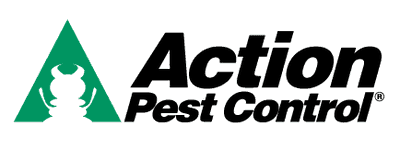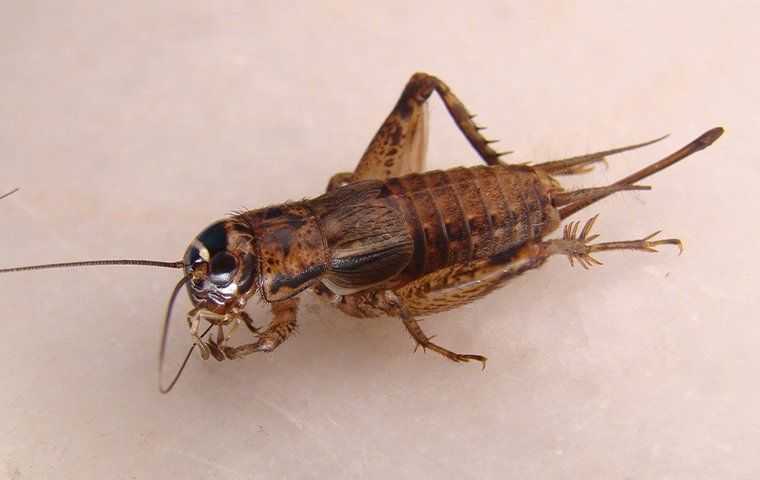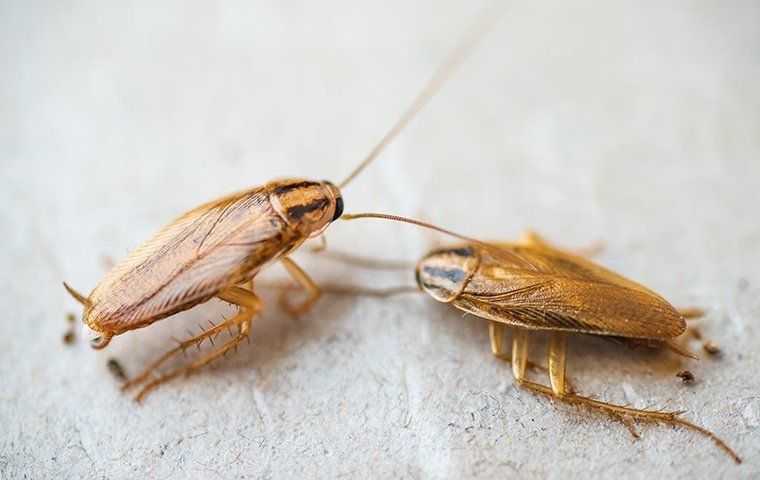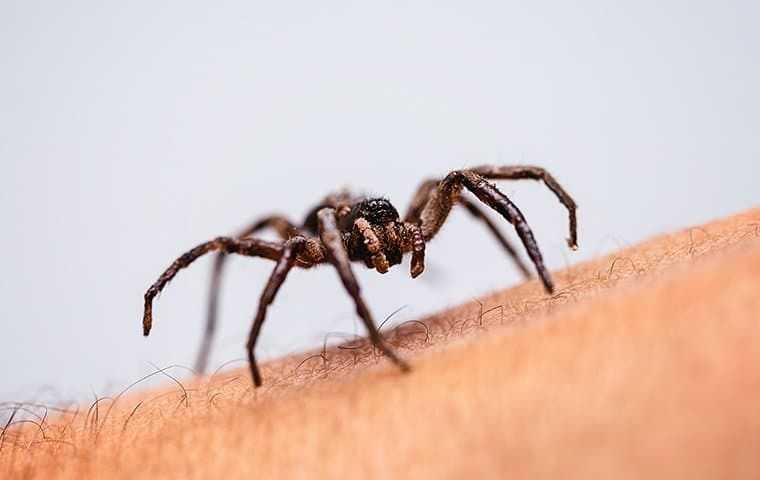Have you been looking for one place to find all the answers to your termite questions? You may have found it! We get a lot of questions about these sneaky insects. Today, we're going to draw from the most common questions and give you a comprehensive guide to help you protect your Louisville home from these destructive, wood-eating pests. We'll look at how they invade your yard and why they are likely to enter your home. We'll explain how damage increases over time. We'll share with you some effective prevention tips that counteract the natural behavior patterns of termites in our region. If you stick with us all the way to the end, we'll not only tell you how professional pest control in Louisville works to stop a termite problem but also how professional termite treatments provide the best prevention possible. As always, you can get fast answers to your questions by speaking with us directly. We're here for you. Call, text, or contact us through our contact page.
The Anatomy Of Termites: Understanding Their Behavior And Habits

There are many misconceptions about termites in Louisville. First of all, we don't have drywood termites. If you read articles online that tell you to look for frass, they can lead you astray. Subterranean termites don't push fecal pellets out of their tunnels. They line tunnel walls with their waste. So, frass is not a termite sign you will find in your Louisville home. Here are a few quick facts about how termites behave and what habits lead to a termite infestation. You can use these facts to help you diagnose a problem or prevent one before it begins.
- Termite workers hide from view. They have a strong aversion to light and hide from all light sources, including the reflected light from the moon. Therefore, you shouldn't expect to easily see worker termites or the warning signs they provide. You have to search for them.
- Swarmers are a kind of termite you may see. When a nest matures, female and male reproductives grow wings and leave the nest to go forth and establish new nests. You may see these winged termites gathered in a swarm, which is why they're called swarmers. The swarm is part of the mating process, but swarms don't last long and they can come and go in the time it takes you to grab your morning coffee and bagel at your favorite shop.
- Swarmers shed their wings. If you have a mature infestation on your property and you miss the termite swarm, you might find the wings. These wings are often found in secluded spaces, such as underneath decks, porches, and patios. Wings are also consumed by other organisms in your yard, except for wings caught in spider webs. Check spider webs to find evidence of termites.
- Workers make up the largest population in a termite colony. They're also the only termites that eat wood. If you want to prevent termite damage, these are the termites you need to know intimately. Along with being averse to light, they're drawn to damp conditions for hydration. They can directly enter a home if they find structural wood in the soil. They create above-ground mud tubes if there is no wood-to-soil contact. And, most of all, they are persistent. A worker termite can climb through a foundation crack and find a pathway all the way up to the sole plates of your home.
- Termites don't damage your home in a week, month, or year. It takes years for these persistent insects to create significant damage. If your termite protection is equally persistent, you can prevent termite damage.
There is much more we could say about termite behavior and habits but these are all that you'll need to evaluate a termite infestation. Before we get to how you can apply what we've talked about so far, let's quickly look at how termite damage begins and how the damage escalates over time.
From Bad To Worse: How Termite Damage Can Escalate Quickly
When termites enter your yard, they'll do so in one of two ways. Workers may tunnel into your yard, find a food source, and start the process of creating a new underground nest. Swarmers may fly into your yard, mate with each other, and create new nests in the ground. In both cases, termites will take root and grow their populations as quickly as food sources allow. They'll feed on stumps, logs, dead branches, wood fences, wood flowerbed borders, and other objects that contain cellulose. Limiting food sources will stunt population growth and deter termites from selecting your property.
There are a few ways termites apply pressure to your home. It is essential to understand termite pressures. Here are a few quick facts:
- Worker termites never stop looking for food. They'll eat food sources in your yard while they're also feeding on your home.
- Workers travel a surprising distance to find food. That means you can have more than one termite colony eating away at your equity.
- Worker termites prefer decaying wood and they prefer dying trees, logs, dead branches, or stumps, but they are not limited to these. The wood timbers in your home are not living wood. Therefore, they are palatable to termites. Workers will gravitate first to water-damaged wood but will also feed on sound timbers, depending on a few key factors.
- Termites consume wood from the inside out. You can have a million termite workers in your home and not see them. You may have to tap on wood to detect timbers that are hollow inside or look for other subtle signs of a termite infestation in your home, such as mud tubes and shed swarmer wings.
- Termites are incredibly quiet. The only time you may hear termites is when soldier termites bang their heads on tunnel walls. Why do they do this? It is to send out a warning sound when their tunnels are invaded by an enemy, such as an ant army. If you hear rustling or rattling sounds in a wood timber, it is time to contact a certified termite control professional for termite removal.
We don't recommend DIY termite treatments as it is critical to make sure no termites remain in your home. But there are many steps you can take to prevent a termite infestation. Let's turn our attention to all-natural termite prevention tips that utilize the facts we've shared so far.
Protecting Your Property: Effective Termite Prevention Methods
You are now armed with some super smart facts about termite behaviors and habits. You can use these facts to detect termite activity and to deter termites even if you don't see activity. It all starts in your yard.
- You can find termite workers in your yard if you keep watch for them. The secret is knowing where they hide and how to identify them when you see them. We've already discussed where they hide. You'll need to dig into the soil around wood, cut into stumps, look under dead branches, and examine areas that are damp. Termite workers are about ? of an inch long, pale white, and look as though they have two parts: a head and a body, though they actually have a head, thorax, and abdomen.
- You can find winged termites in your yard. A swarmer is about ? of an inch in length, black, and has long white wings that hang well past the end of the abdomen. The wings of a termite swarmer are white and rounded at the tips.
- You can find shelter tubes in secluded areas, such as on a foundation wall under your back deck or within a crawlspace. You can also find shelter tubes in other places, where you have forced them to create these tubes. For example, placing firewood on a rubber mat will force termite workers to create a mud tube on the mat, which you can see; or setting your back deck posts on concrete foundations will require workers to make tubes up and over the concrete to get to the wood.
- The best way to deter termite workers is to not have wood available in your yard. Doing so will remove your ability to detect them, but it is best to deter them to detect them. We recommend removing logs, sticks, and stumps. Store dead branches in a bin. Store firewood on a mat or platform away from your exterior. Nurse dying trees back to health. Replace wood structures with termite-resistant materials.
- Keep in mind that termites don't only eat wood. They will eat cardboard, paper, clothing, and other materials. Pick up any junk piles in your yard to deter termites.
Dedicated termite inspections and general termite prevention in your yard can guard your property. While these steps don't provide the best protection, it is better to have some protection than no protection at all. Plus, these are natural solutions that will provide trusted results. DIY termite treatments are hit-or-miss.
Professional Termite Control: Long-Term Protection For Your Home
The best way to get rid of termites or to guard your property long-term is to get professional termite control. A professional will install professional-grade products. These products are installed by certified technicians who are trained in the best practices outlined by the manufacturers. If you're in Louisville, take action and contact Action Pest Control. We use the two most trusted names in termite control: Sentricon® and Termidor®. Want to learn about how these award-winning products work and which is best for your property? Give us a call, send us a text, or drop us a line on our contact page. There is no time like the present to get the termite protection you need for peace of mind.

What Action Pest Control Customers Are Saying
Action is trusted by over 23,000 happy customers, see what our customers are saying!

“ Your PEST CONTROL deserves a ten star rating!!!!!”

“ I wanted to tell you that we really enjoy having Jason as our technician. He is polite, professional and easy to talk to about any issues or concerns. Please give him a pat on the back from us for his good work. Thanks very much.”

“ Derek is always cooperative, enthusiastic, and professional. Excellent service whether I am home or not.”
Schedule Your Free Inspection
Complete the form below to schedule your no obligation inspection.









